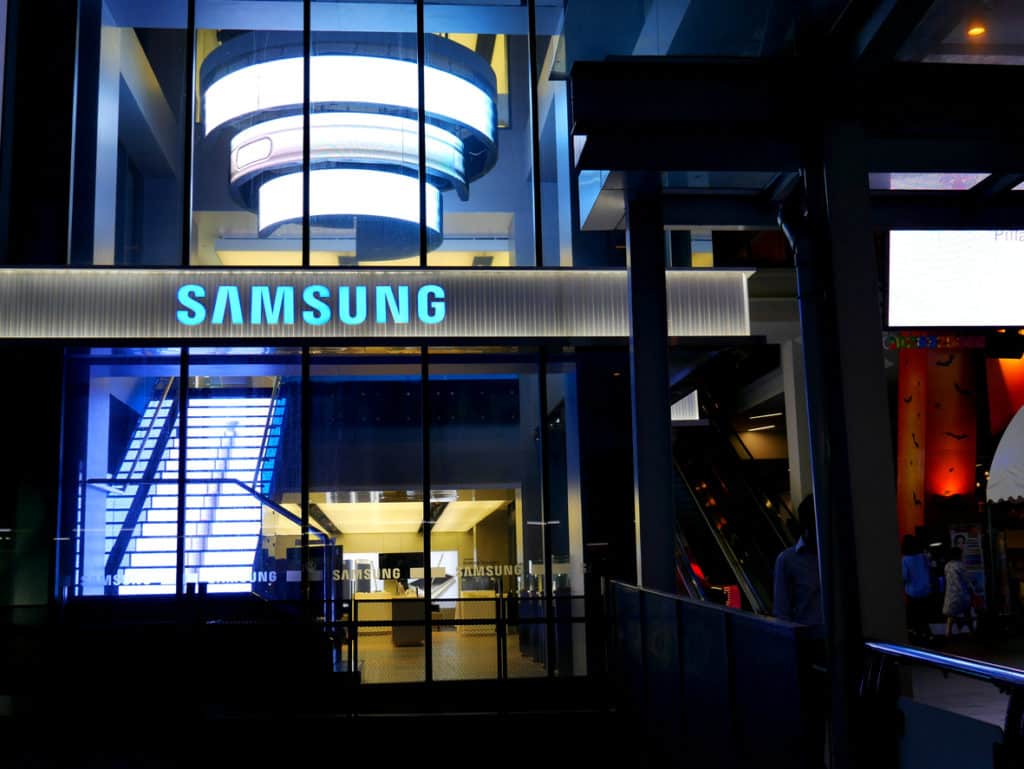- Introduction
- What diverted Samsung’s thoughts towards Design Thinking?
- The quest of Lee Kun-Hee in making Samsung a Global Brand by adopting Design Thinking
- Samsung’s turning point in the design thinking process:
- How design thinking worked for Samsung:
- Did Samsung emerge victorious in the Design Thinking transition?
- Is design thinking the future?
- I want to be a part of the Design Thinking process. What should I do?
Introduction
Did you know that Samsung, one of the most valuable technology brands of 2020, was once a company that manufactured inexpensive, imitative electronics for other companies? Today, the company has a whopping USD 62.3 billion brand value, placing it 5th in the list of best brands globally. What changed over the years? How did they become the market leader in technology? Did they have tie-ups with aliens?

It is not aliens or rocket science that powered the rise of Samsung as the tech giant. The factor behind its unparalleled success is ‘Advanced Design Thinking.’ Design thinking, an iterative and non-linear process that helps to understand users, challenge assumptions, redefine problems and create innovative solutions to specific issues, has transformed how the world functions. The design thinking process involves five stages/steps, namely empathize, define, ideate, prototype, and test.
What diverted Samsung’s thoughts towards Design Thinking?
Samsung needed a visionary to pull itself from the lack of development and innovation, and it came in the form of Lee Kun-Hee, the chairman of Samsung Group. Lee Kun-Hee was frustrated with the development and innovation Samsung was moving forward with. He embarked on a conquest to revolutionize the name of Samsung in the technology industry.
The quest of Lee Kun-Hee in making Samsung a Global Brand by adopting Design Thinking
The innovation process at Samsung began with research that incorporated individuals from multidisciplinary teams. The team consisted of marketers, ethnographers, designers, musicians, engineers, and writers. They were responsible for finding out users’ unmet needs and identifying technological, economic, and cultural trends.
Also Read: How Design Thinking Works In Business Growth
Samsung’s turning point in the design thinking process:
A stitch in time saves nine. The timely decision that fueled the company’s unparalleled success was to create an in-house innovation and design team. This decision proved to be a vital factor in the company’s growth. Employees were more responsible and took ownership of the design and innovation process.
As per An Yong-Il, the vice president of design strategy, “When we had our place in the organization, we started caring about the future of the company.”
How design thinking worked for Samsung:
The process of implementing the design thinking process in tech giants is circuitous. No matter how much advanced a company’s approach towards design thinking is, there are always hurdles for the concept to become a product. Here are a few instances where design thinking helped Samsung tackle the stereotypical odds.
Samsung’s Benz Phone:
| The Concept | The first flip cover phone with no external antenna |
| Designer | Lee Min-Hyouk, Samsung Mobile’s creative director |
| Problem to be Encountered | Lee, who was then a junior designer, knew that he had to think from an engineer’s perspective apart from a designer’s point of view to persuade the engineers to eliminate the external antenna. |
| The Brainwork | Lee created a new hinge design that provided more space to house a larger and stronger antenna in the device’s internal hardware. He also researched paints that could enhance signal reception. |
| Did it Work? | Yes, it did. Lee was able to convince the engineers about the design and functionality of the phone. The omission of an external antenna would give the phone a futuristic approach and portability. The phone was a grand success and sold over 10 million units. |
| Strategy Used | Empathizing within the organization. |
Samsung LCD TV’s:
| The Concept | One-design flat panel television- a thin metal encased TV |
| Designer | Samsung Designing Team |
| Problem to be Encountered | The LCD panel suppliers were accustomed to providing panels with inner covers for protecting the components. Adding to the bulk of inner covers, TV manufacturers would add an external cover, making the final product even bulkier. The suppliers were ignorant of Samsung’s request to omit the inner covers. |
| The Brainwork | Samsung devised another strategy that would indirectly prompt the suppliers to remove the inner cover. The designers and engineers paired up and invented a supply-chain model for LCD panel systems that would drastically reduce the shipping costs. |
| Did it Work? | They convinced the suppliers with research and proof that if the inner covers are omitted, the suppliers could send across 10 times the LCD panels than they were generally shipping. The suppliers took the bait, and as a result, Samsung got what it wanted- coverless LCD panels. |
| Strategy Used | Solving an indirect issue gives a solution to the direct problem. |
Galaxy Note series:
| The Concept | A five-and-a-half-inch smartphone that acts as a smart diary that features a pen interface |
| Designer | Samsung Designing Team |
| Problem to be Encountered | Thought of unacceptance by users due to the screen size as there were no phones in that generation which were 5 inches plus. |
| The Brainwork | The team reframed a small section of the idea and added a hardware feature called the smart cover. When closed, the smart cover would feature an interactive screen, which grabbed the attention of the market. It looked more like a pocket diary, and it did not look so big. |
| Did it Work? | It did. The entire perception of the decision-makers changed, and the design was given the go-ahead. This gave rise to the highly successful Samsung Note series. |
| Strategy Used | Visualizing the future and problem-solving |
Samsung Bordeaux TV model:
| The Concept | Shifting the location of speakers from the sides to the bottom of the panel to make the TV looks appealing and futuristic. |
| Designer | Samsung Designing Team |
| Problem to be Encountered | The shifting of speakers might cause an issue in audio delivery and quality, which might affect the buying decision of consumers. |
| The Brainwork | Research by the teams indicated that the majority of the people no longer depended on the internal speakers and often preferred home theatres. The study showed that audio quality could safely be compromised. |
| Did it Work? | The product with speakers at the chevron-shaped bottom edge was released in the European markets, and the model was a big hit. The icing on the cake was that following the model’s success, Samsung created a daring design with a glossy white border and a red chevron-shaped lower edge called the Bordeaux model. The model was released, and in 6 months, it sold a staggering 1 million units. |
| Strategy Used | Marketplace experimentation. |
Did Samsung emerge victorious in the Design Thinking transition?
The answer is already rooted in our minds, as Samsung transformed into one of the most successful design-oriented companies of the era. The innumerable awards stacked in the trophy cabinet at Samsung HQ in Seoul, South Korea, is the embodiment of the successful innovation and design implementation over the years.
The curved screens, foldable displays, leading-edge technologies, etc., incorporated across all Samsung devices, is the by-product of effective design thinking. The tables have turned in such a way that the competitors have started copying from Samsung’s design. Such is the power of design thinking.
Is design thinking the future?
Yes, absolutely. It is the present and the future. Design thinking has evolved organizations so that the decision-makers rely on designers to visualize the company’s future. Samsung is one such company that has design thinking incorporated into its DNA.
I want to be a part of the Design Thinking process. What should I do?
There are various design thinking courses online one can choose from. But, we would recommend something that adds credibility and value to the efforts and money you have invested.
Design Thinking course can help you gain in-depth knowledge about the design thinking process. This course is for individuals who want to venture into the depths of design thinking. Enroll now and be a part of the revolutionary success stories of top MNC’s and startups.





